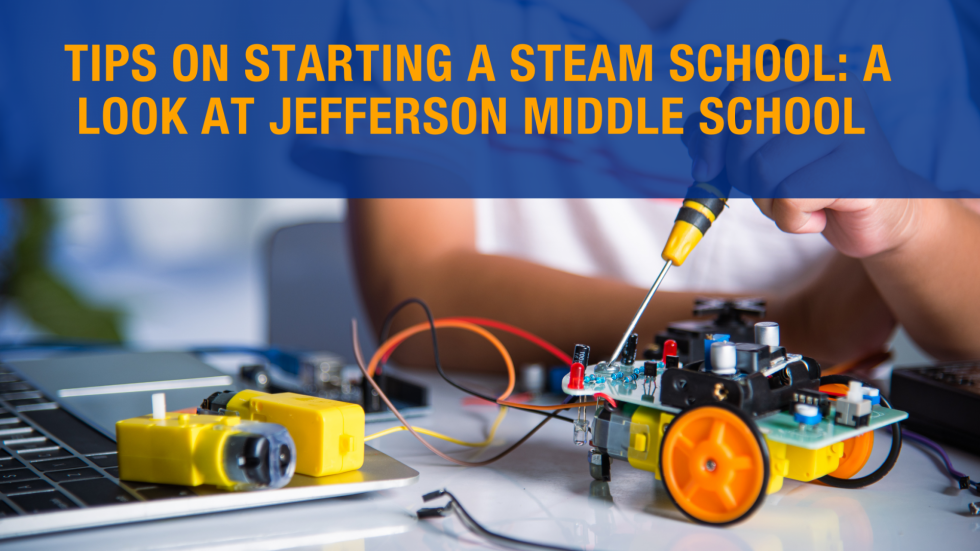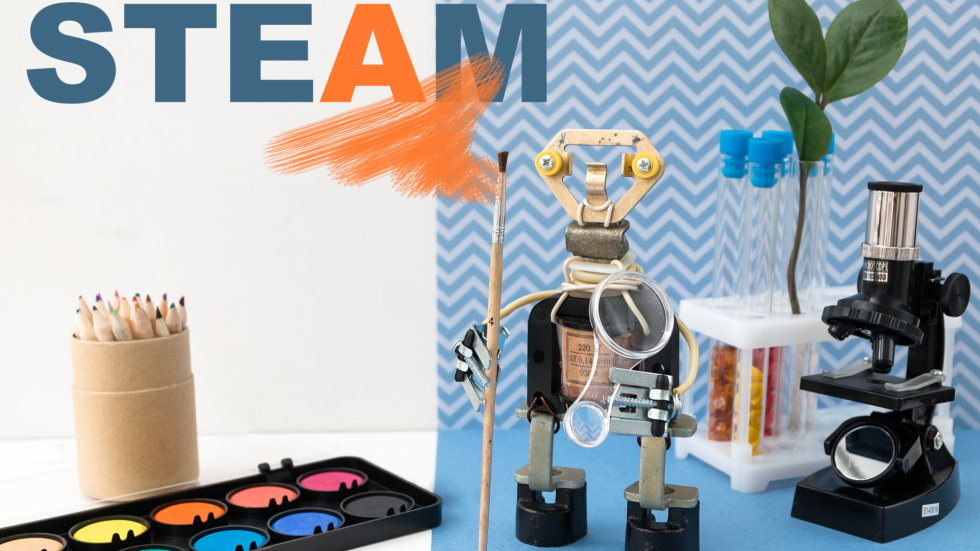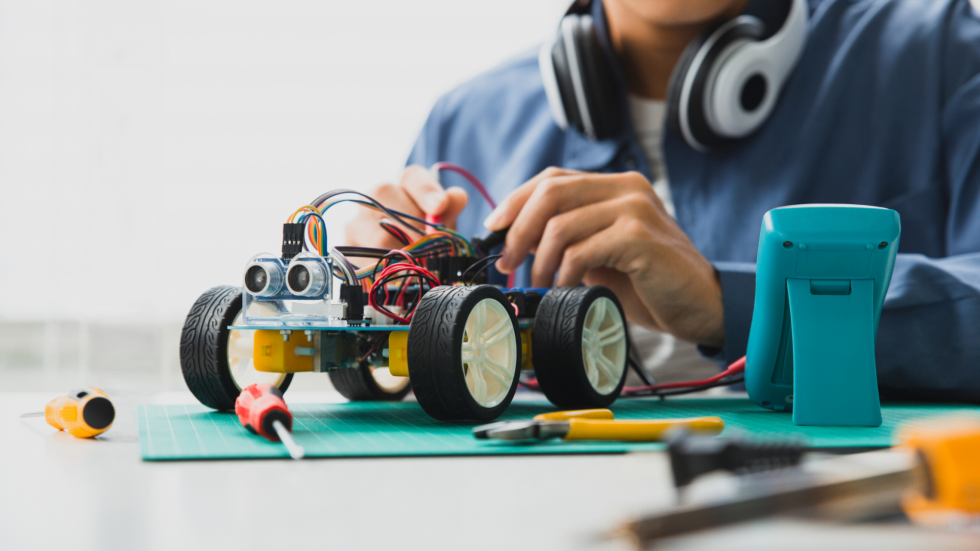Tips on Starting a STEAM School: A Look at Jefferson Middle School
Prefer to listen? Check out the audio recording of this post instead.
“STEM looks different at Jeff,” Principal Jake Adams of Jefferson Middle School in Columbia, Missouri, told the room at the 2023 Making Schools Work Conference in Orlando, Florida.
He and STEAM Specialist, Dr. Heather McCullar, presented their innovative approaches that transformed Jefferson Middle School into a STEAM school during their session, “Building a STEAM School From the Ground Up.”
In the session, they shared how they fostered engaging programs that provide opportunities for career exploration at the middle school level. More than just content and curriculum, the team at JMS have built a STEM culture that permeates every aspect of the learning environment.
Grounded in real-world relevancy, students are able to build deep understanding of content while exploring career pathways and developing employability skills.
Building Project-Based and Placed-Based Learning Practices
The structure of curriculum at JMS is designed to embed STEAM throughout the school experience. Using gold standard principles from the Buck Institute, project-based and place-based learning practices are present in all instructional areas.
Here are just some of the things the school does to incorporate STEAM into their core curriculum:
- They work in field experiences and guest speakers to enhance learning and build real-world relevancy.
- In the halls of the school, they house a mini zoo with over 100 animals including snakes, guinea pigs, rats and fish cared for by students throughout the school year.
- The community is also invited to tour the zoo and older students lead tours fostering leadership skills.
- A Biomedical Detectives course allows students to exercise their problem-solving skills as part of a Project Lead the Way curriculum that is aligned to high school career and technical standards.
- Students also have access to an Innovation Makerspace that provides them with materials ranging from 3D printers, to sewing machines, to recording equipment.
- All students take four 9-week STEAM elective classes each year that taps into student interests and offer a venue to build a variety of skills through project-based learning. Examples of elective courses include the following:
- Apocalyptic Survival,
- Crime Scene Investigation and
- Musical Theatre Production.
- At the end of their middle school experience, 8th grade students participate in a capstone project where they conduct their own research and develop a product to demonstrate their learning.
Building a STEAM Program
This level of STEAM implementation did not happen overnight. Let’s take a look at the process.
Step 1: Get Leadership Buy-In
It started when the school administrative team and district representatives developed an implementation plan during a multi-year planning process.
Step 2: Study Models
During that time, the leadership team conducted site visits to Champlin-Brooklyn Academy for Math and Sciences in New York City and Blaine High School: Center for Engineering, Mathematics and Science in Minnesota and adopted an implementation rubric.
Step 3: Create Professional Development Opportunities for Teachers
The JMS team also partnered with SREB and the Columbia Area Career and Technical Center on a Project-Based Learning grant that helped teachers gain the skills they needed to fully implement PBL in their classrooms.
Step 4: Create Industry Partnership Opportunities
While the team conducted the above steps, they also developed strong connections with local partners such as Boone Hospital, Boone Electric, Columbia College, the Columbia Area Food Bank and Boone Nature School. Partners enhanced curriculum by providing field experiences and panelists for school events.
Overcoming Challenges
Some of the biggest challenges to this transition was hiring, professional development and gaining buy-in from current teaching staff. So how did they handle these concerns?
Finding the Funds
Because two of the major concerns (hiring teachers and offering professional development opportunities) related to funds, one of the first things the school had to do was find money to support these initiatives.
School leadership worked with the district to identify funds they could use for professional development and teacher stipends for elective classes.
Gaining Buy-in
During the session, McCullar stressed the importance of allowing teachers the opportunity to develop innovative courses based on their interests and expertise. She expressed that this was a win-win to develop interesting content and gain buy-in from teachers.
Hiring PBL Instructors
Along with finding the funding for new teachers and classes, the school needed to hire teachers who could help with their new initiatives. Administrators looked for candidates who expressed an openness for exploration in addition to finite content knowledge.
Adams stressed the importance of recruiting and developing teachers who would thrive in a dynamic and non-traditional environment.
Final Thoughts
An undeniable culture of innovation and exploration has been developed as part of the STEAM transition at JMS. Teachers and administrators have found innovative ways to utilize space, involve community partners, embed project-based learning in all courses and align learning with career pathway standards.
As the JMS team expressed, “STEM shouldn’t be one more thing, it should be the way we do business.” This philosophy is clearly evident in the approach at Jefferson Middle School.
Don’t miss out on more insights like these. Make sure you sign up for our monthly Promising Practices newsletter to have these articles and more sent to your inbox each month.
Subscribe to Promising Practices





